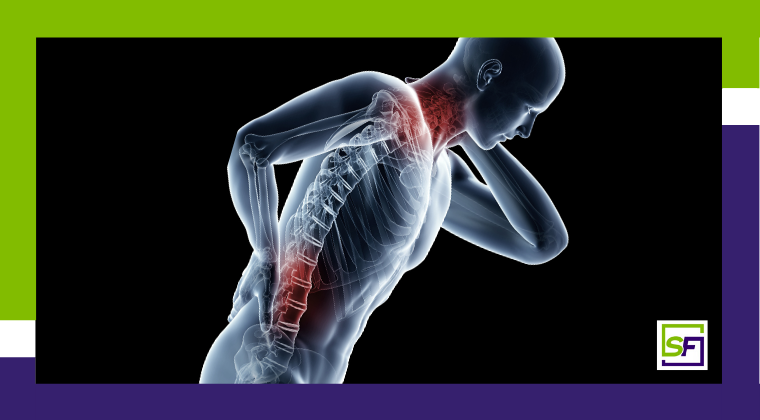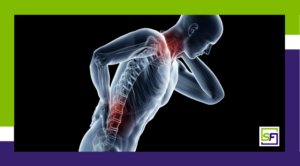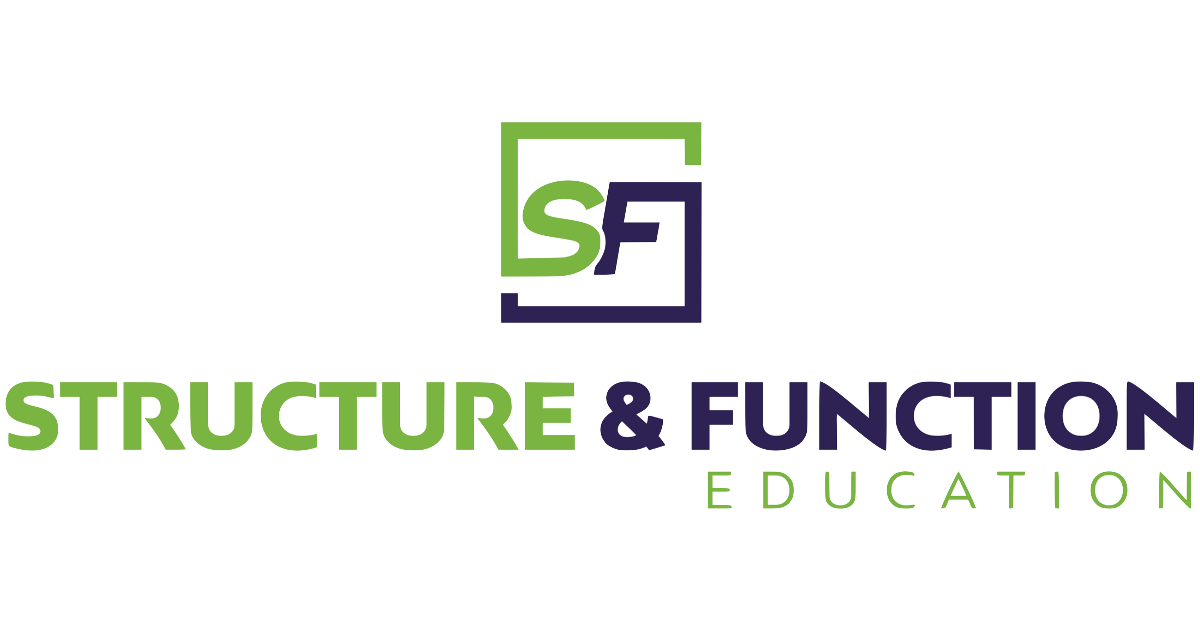
Neck & Back Pain: How Structure & Function Relate
Who is this course for?
The Neck & Back Pain: How Structure & Function Relate course will provide therapists with a better understanding of how structure relates to function, and function relates to structure specifically surrounding neck and back pain. This course highlights the processes of improved diagnose and the interrelated causes of back pain, including breath and postural evaluation.
Therapy practitioners should take this course if they would like a more comprehensive understanding of how to inter-relate concepts of structural and functional examination and treatment, and how static postures and dynamic function relate.
As a therapist or strength coach…
You know that structure and function are related, however it can be difficult to reconcile both approaches. Being able to create both structural and functional diagnoses is key to a comprehensive rehabilitation program.
We know structure dictates function and vice versa. The way this concept relates to neck and back pathology is crucial to understand, as we explore concepts that reach far beyond the musculoskeletal system considerations.
Are you dealing with patients who experience neck and back pain?
Neck and back pain are so multi-factorial, even just from a musculoskeletal perspective. When we begin to consider these diagnoses from a neurological and visceral perspective, it can complicate matters even more. However, these additional perspectives can help simplify as well.
Do you want to learn ways to improve your results with understanding neck and back pain?
- Learn how structure and function are inter-related
- Learn how adding a neurological and visceral perspective into your differential diagnosis can help improve both evaluation and treatment approaches
- Learn how posture and breathing relate to the neck and back
Learn about…
- How our spinal structure dictates our function
- How our diaphragm dictates spinal function and contributes to back pathology
- How posture and breathing go hand in hand
- How our anatomy is interconnected
Don’t wait!
Do you need CEU credits but can’t find the time to go to a class
Let online education help you out!
Learn at your own pace, in your ideal environment!
You’re a busy professional. You need to balance your career, home life and find time to continue your education.
As long as you have Internet access you can access the course from anywhere.
Advance your career in areas of focused study, geared towards your personal learning goals.
Becoming an expert takes time. It takes continuous study and practice. When you gain knowledge you are advancing your professional career. Online learning gives you the opportunity to focus on the skills you need.
Topics that you enjoy.
Select topics that interest you. Topics that you find fascinating. Online distance learning allows you to find topics that might not be available locally.
Learn at your own pace.
Everyone has their own rhythm. Some people only need to hear a lecture once and take perfect notes, while others might need to listen more than once. Online learning gives you the option to repeat a lecture for maximum affect.
Are there Continuing Education Units (CEU)?
Athletic Trainers:
Structure and Function Education (BOC AP# P10069) is approved by the Board of Certification, Inc. to provide continuing education to Athletic Trainers. This program is eligible for a maximum of 2.75 Category A CEUs. ATs should claim only those hours actually spent in the educational program.
Physical Therapists:
Texas Physical Therapy Association has approved this course for 2.70 Continuing Competence Unit(s) (CCUs).
Chiropractors:
Structure and Function Education is a PACE Recognized Provider. This course is designated for 2.5 Continuing Education Units. PACE is a division of the Federation of Chiropractic Licensing Boards, and serves Alabama, Alaska, Arizona, Connecticut, District of Columbia, Georgia, Idaho, Indiana, Iowa, Kansas, Louisiana, Maine, Maryland, Massachusetts, Minnesota, Montana, Nebraska, Nevada, New Jersey, New Mexico, North Carolina, North Dakota, Oklahoma, Ohio, Oregon, Rhode Island, South Carolina, South Dakota, Tennessee, Texas, Utah, Vermont, Virginia, Washington and Wyoming.
Don’t wait!
This course is for you if you are you looking to…
Understand how structure and function relate.
Understand how these concepts relate to neck and back dysfunction.
Learn simple strategies to comprehensively manage neck and back pain.
Your instructor Sue will discuss…
- How structure and function relate
- Clinical examples of this concept as it relates to the neck and back
- How to apply these concepts to your clinical practice
Don’t wait!
Full Course Description
What will you learn as a student in this Course?
- How our spinal structure dictates our function
- How our spinal function is dictated by its structure
- How spinal structure dictates our function
- How does our body fits together and work together
- How does the shape of our bodies dictate posture
- How our diaphragm dictates spinal function and back pain
- How posture and breathing go hand in hand
- How our anatomy is interconnected
- How structure influences spinal function and posture
What’s included in this course?
- 5 lessons including, 1 hour of video
- A complete downloadable transcript for you to follow along.
- 7 article readings
- Course Completion quiz
Reading Materials
All reading materials are downloaded through PubMed free PMC.
- Ivanenko Y, Gurfinkel VS. Human Postural Control. Front Neurosci. 2018;12:171. Published 2018 Mar 20. doi:10.3389/fnins.2018.00171
- Harrison DE, Colloca CJ, Harrison DD, Janik TJ, Haas JW, Keller TS. Anterior thoracic posture increases thoracolumbar disc loading. Eur Spine J. 2005;14(3):234–242. doi:10.1007/s00586-004-0734-0
- Mrozkowiak M, Walicka-Cupryś K, Magoń G. Comparison of Spinal Curvatures in the Sagittal Plane, as Well as Body Height and Mass in Polish Children and Adolescents Examined in the Late 1950s and in the Early 2000s. Med Sci Monit. 2018;24:4489–4500. Published 2018 Jun 30. doi:10.12659/MSM.907134
- Vostatek P, Novák D, Rychnovský T, Rychnovská S. Diaphragm postural function analysis using magnetic resonance imaging. PLoS One. 2013;8(3):e56724. doi:10.1371/journal.pone.0056724
- Kocjan J, Gzik-Zroska B, Nowakowska K, et al. Impact of diaphragm function parameters on balance maintenance. PLoS One. 2018;13(12):e0208697. Published 2018 Dec 28. doi:10.1371/journal.pone.0208697
- Low back pain and kidney mobility: local osteopathic fascial manipulation decreases pain perception and improves renal mobility Tozzi P, Bongiorno D, Vitturini C. J Bodyw Mov Ther. 2012 Jul;16(3):381-391. doi: 10.1016/j.jbmt.2012.02.001. Epub 2012 Mar 3.
- Dainese R, Serra J, Azpiroz F, Malagelada JR. Influence of body posture on intestinal transit of gas. Gut. 2003;52(7):971–974. doi:10.1136/gut.52.7.971
Register Now for this course
Meet Your Instructor
Pricing Information
Monthly Subscription
$ 19.99 Monthly- Total cost $240 per year.
- 3-day free trial!
- Monthly membership.
- Cancel any time!
- Access to all online classes!
- Access to class discussions.
- Access to the subscriber only community.
- Live Q&A sessions with Sue, Brian and other S&F Education instructors.
Annual Subscription
$ 199.00 Annually- Save $40 over the monthly cost
- 3-day free trial!
- Yearly membership.
- Cancel any time!
- Access to all online classes!
- Access to class discussions.
- Access to the subscriber only community.
- Live Q&A sessions with Sue, Brian and other S&F Education instructors.
Satisfaction Guarantee
If you aren’t satisfied with the course within the first 30 days after your first payment but before you have taken the final exam, you can get a refund. We’ll cancel the course immediately upon your refund request and issue the refund to your credit card though our processor Stripe.
Frequently Asked Questions
How is the course delivered?
The course is a series of video lectures and readings. The student is allowed to proceed at their own pace. The is an exam at then end that the student needs to pass.
How soon can I use the techniques learned in my practice?
You can use it immediately after passing the exam.
How long do I have access to the course?
You will have full access to the course for 12 months starting on the date of purchase. Membership Subscribers have access as longs as they have an active subscription.
P.S.
If you want help reconciling both structural and functional approaches to human movement, this course is for you.
Neck & Back Pain: How Structure & Function Relate

The Neck & Back Pain: How Structure & Function Relate course will provide therapists with a better understanding of how structure relates to function, and function relates to structure specifically surrounding neck and back pain. This course highlights the processes of improved diagnose and the interrelated causes of back pain, including breath and postural evaluation.
Course Provider: Organization
Course Provider Name: Structure & Function Edcuation
Course Provider URL: https://structureandfunction.net/online-courses/neck-back-pain-how-structure-function-relate/
Course Mode: Online
Course Workload: PT2H45M
Duration: PT2H45M
Repeat Frequency: Daily
Course Type: Paid
Course Currency: USD
5


